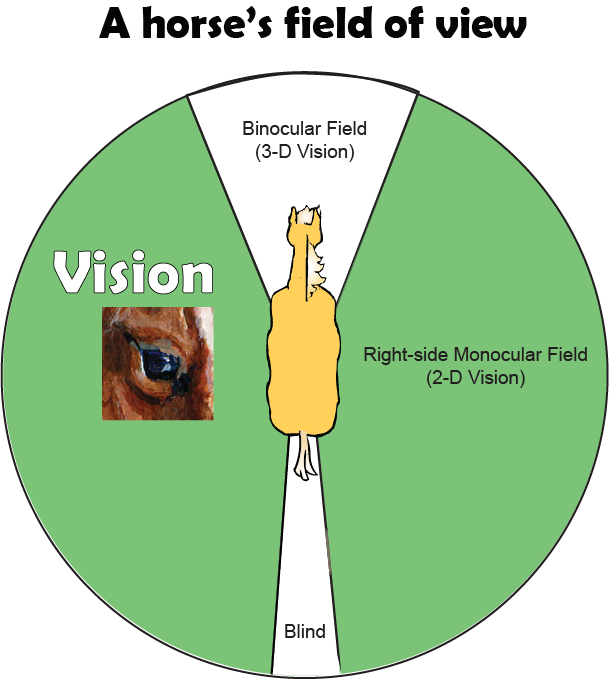Can Ponies Distinguish Human Facial Expressions?
Most humans are good at giving someone a wide berth if they approach with a furrowed brow but how good are horses at interpreting our expressions? Dr. Katrina Merkies, researcher and associate professor at the University of Guelph and her team found out in a study involving 20 lesson ponies and some talented actors.
There has been past research conducted with flash cards, but this is the first study to document the response of equines that were shown happy, sad, angry and neutral facial expressions in person.
“In terms of behavior generally, the right brain processes emotions and particularly negative stimuli,” explains Merkies, “whereas the left brain is more related to social interactions and learned behavior.”
Horses see with the left eye things on their left side and with their right eye things on the right side and unlike humans, there’s very little fusion in their optic nerves and they don’t really have a lot of binocular vision.

The optic nerve brings information from the eye to the brain and crosses from the left eye to the right side of the brain and from the right eye to the left side of the brain. In horses, because their eyes are located on the sides of their head with largely monocular vision, it is easy to discern what they see with their left eye is processed in the right brain and visa versa.
After initial clicker training took place with the ponies so they would be likely to approach the human actors; two actors presented expressions of happiness, sadness, anger and neutrality.
As hypothesised, the angry and sad faces resulted in the ponies looking at the actors more often with their left eye first. The left eye glance corresponds with the right brain, which is in charge of processing negative stimuli.
Conversely, the ponies more often looked at the joyous expression with their right eye and interestingly the neutral facial expression came up with a 50/50 reaction!
The ponies also had more licking and chewing with neutral faces, and they focused their ears more on the actor and stood farther away from joyous or sad expressions. Another action noted in the study included heart rate, which was not affected by any of the facial expressions presented.
“I think it’s important to note that although the horses did respond to the different facial expressions and they clearly distinguish between them that doesn’t necessarily mean that they understand what we’re feeling or that they feel what we feel,” says Merkies. “They may respond more to an angry face but that doesn’t mean that they feel your anger and that there are other things taken into consideration like the way that you move your body and what else is happening in the environment.”
Merkies sums up, “Many different cues factor into how a horse will respond in any moment, but understanding our facial expression is important to social interactions. It’s interesting that facial expressions are highly conserved across species, so even though we can have very different physiognomy (we look very different), for example mouse compared to a horse, compared to a human, but facial expressions are fairly similar which is very interesting and very helpful because if you can understand the facial expression from another being or another species, then you can know how to respond appropriately.”
To visit the research paper, Can Ponies (Equus Caballus) Distinguish Human Facial Expressions?
published Sept. 7, 2022. Follow this link: https://www.mdpi.com/2076-2615/12/18/2331
Interesting in learning more about equine behaviour and how horses communicate?
Look for Equine Guelph’s short courses for youth and adults on Horse Behaviour and Safety at TheHorsePortal.ca and more in-depth 12-week courses on Equine Behaviour and Advanced Equine Behaviour.

